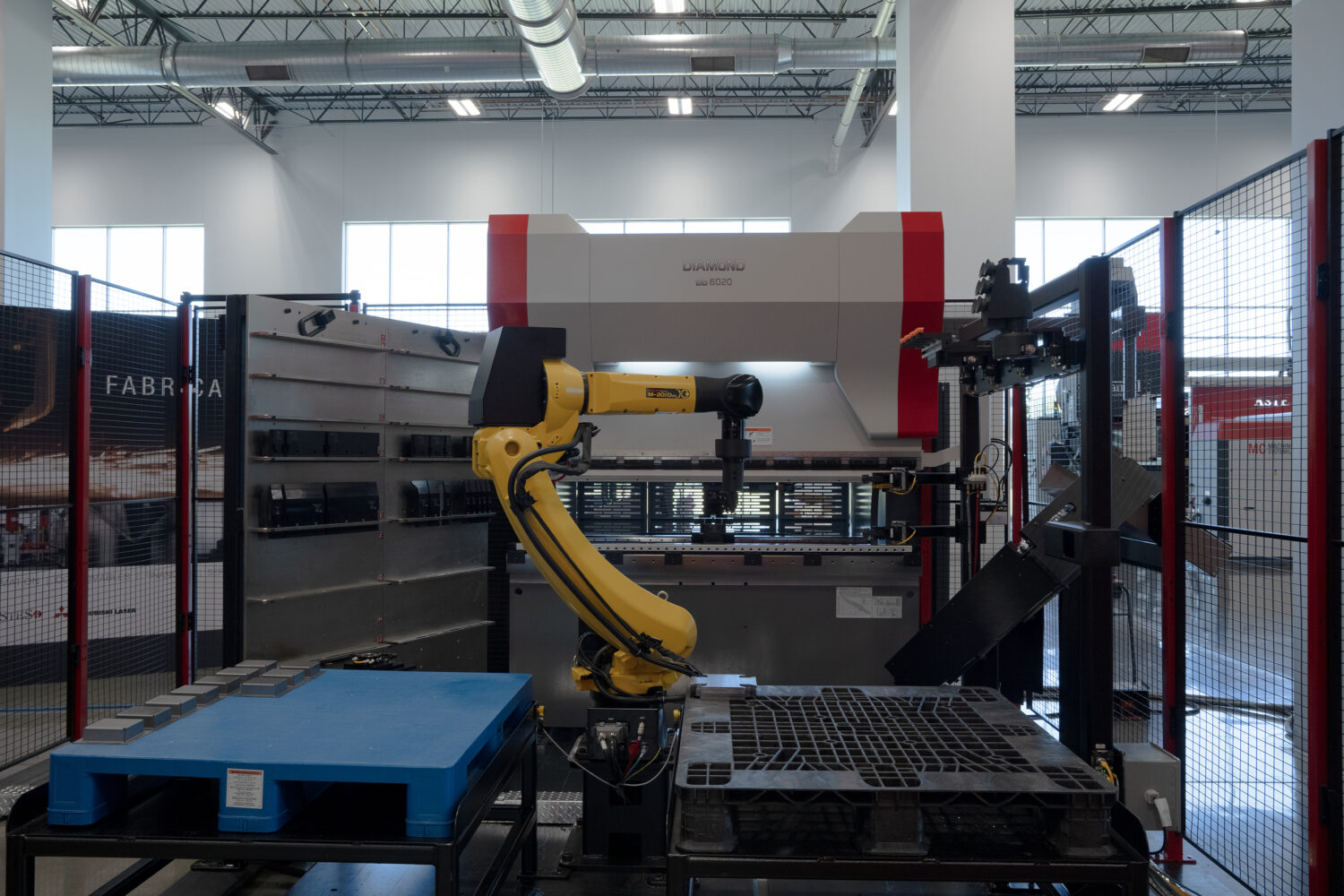
In today’s fast-paced global economy, manufacturers face a unique set of challenges that require both innovation and adaptability to overcome. While automation and technological advancements offer significant improvements, many companies continue to grapple with the realities of labor shortages, maintaining safety standards, and staying competitive in a world where lower-wage countries dominate certain markets. Nowhere are these challenges more evident than in the fabrication industry.
The Labor Market Shortage in Fabrication Processes
One of the most pressing issues in the manufacturing sector is the significant shortage of skilled labor, particularly in fabrication processes such as press brake operations. The press brake market in the U.S. has been expanding rapidly, driven by growing demand in industries such as automotive, aerospace, and construction. According to market reports, the U.S. press brake market is projected to grow steadily over the next few years as manufacturers seek efficient, precise metal-forming solutions.
However, despite this growth, the industry faces a major challenge: finding workers with the skills necessary to operate complex press brake machines. These machines require not just technical knowledge but also the experience to handle the nuances of different materials and product specifications. As older, skilled workers retire, there has been a noticeable lack of younger talent entering the field to replace them. This gap in the labor market is limiting the production capacity of many fabrication shops and could slow down the overall growth of the industry unless addressed.
Press Brake Safety Record and Automation's Role
Safety is another significant concern in the press brake and broader fabrication industry. Press brake machines, while highly effective, can be hazardous if not operated correctly. According to industry safety records, injuries related to press brakes—such as hand and finger amputations—remain a concern, particularly in facilities that still rely heavily on manual operations.
Advanced robotic systems, like our FastBEND solution in partnership with MC Machinery Systems, Inc, are designed to reduce human involvement in hazardous operations such as press brake bending. The FastBEND robotic bending cell not only increase precision and efficiency but also dramatically improve workplace safety by limiting direct human-machine interaction. By handling these routine tasks, automation allows personnel to shift their focus to more engaging and strategic work, enhancing overall job satisfaction and enabling them to contribute more significantly to the company's innovation and growth.
Fabrication Industry Growth (CAGR) and the Role of Robotics
The global metal fabrication market, including the U.S., is expected to see significant growth in the coming years. Analysts project a consistently positive compound annual growth rate (CAGR) from 2023 to 2030, driven by the increasing demand for high-quality metal components in sectors such as construction, automotive, and energy. As industries grow and evolve, the need for precise, high-quality fabrication will only increase.
For the fabrication industry to meet this demand, it must overcome the twin challenges of labor shortages and high production costs. This is where robotics will play a crucial role. Robotic automation in the fabrication process, particularly in press brake operations, can provide the scalability and flexibility manufacturers need. By automating key parts of the fabrication process with systems like FastBEND, companies can increase their throughput without relying on additional skilled labor, thus easing the pressure caused by labor shortages.
Moreover, robotics can help reduce operational costs by minimizing waste and improving production efficiency. Unlike human operators, robots can work around the clock without breaks, enabling manufacturers to scale up production to meet market demand. This is essential in staying competitive, especially against manufacturers in lower-wage countries.
How Robotics Will Support the Future of Fabrication
Robotics is not just about replacing human labor; it’s about augmenting it and enabling manufacturers to do more with fewer skilled workers. In the case of press brake operations, automated robotic systems like FastBEND can handle tasks like material loading and unloading, precise bending, and part handling 24 hours a day and 7 days a week. This reduces the need for human operators to perform repetitive or hazardous tasks, freeing them up for more value-added activities that require problem-solving and critical thinking.
The collaboration between Acieta and MC Machinery Systems, Inc. exemplifies how robotics can help manufacturers tackle these issues. By integrating robotic automation into the press brake process with solutions like FastBEND, manufacturers can increase both safety and productivity, while ensuring they remain competitive in a global market that demands high-quality products at lower costs.
Manufacturers today are navigating a complex landscape that includes a shortage of skilled labor, the need for enhanced safety protocols, and the pressures of global competition. By adopting advanced technologies like FastBEND and fostering innovation, the fabrication industry can ensure it stays ahead of the curve, while safeguarding its most valuable resource—its people.
Are you ready to lead your fabrication operations into the future? Discover how our FastBEND robotic bending cell can transform your processes, enhance safety, and combat labor shortages. Contact us today to learn more about how you can drive your competitive edge with Acieta. Let's build a safer, more efficient future together.